*
Pictures from the Buccaneers' OTA practice on June 8th at One Buccaneer Place.

WR Mike Evans
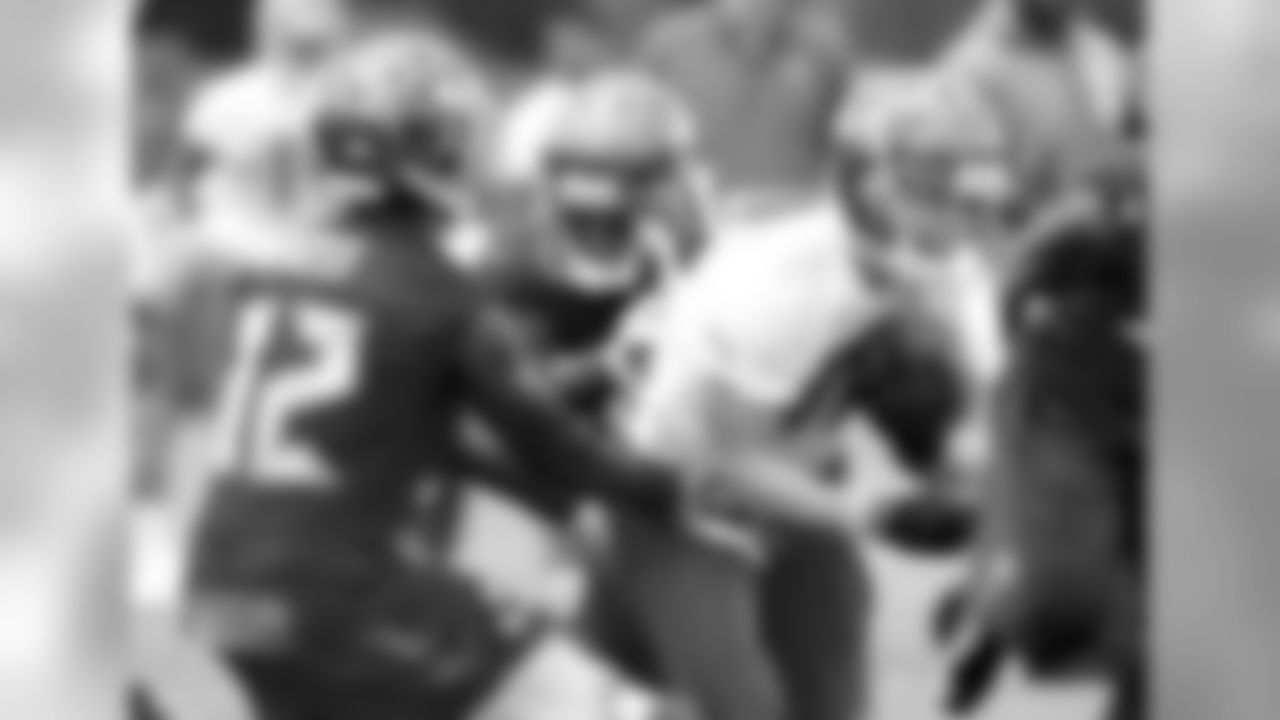
WR Adam Humphries

DB Ryan Smith

WR Kenny Bell
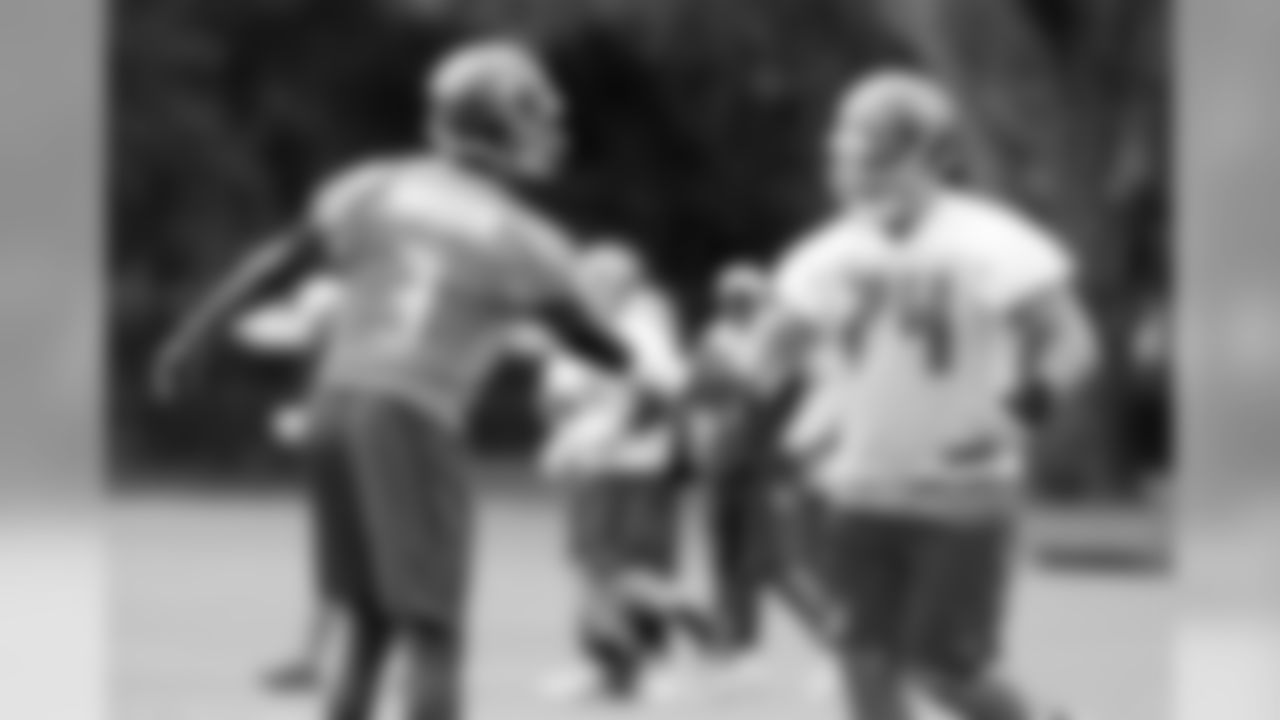
QB Jameis Winston and G Ali Marpet

LB Kwon Alexander

DT Gerald McCoy
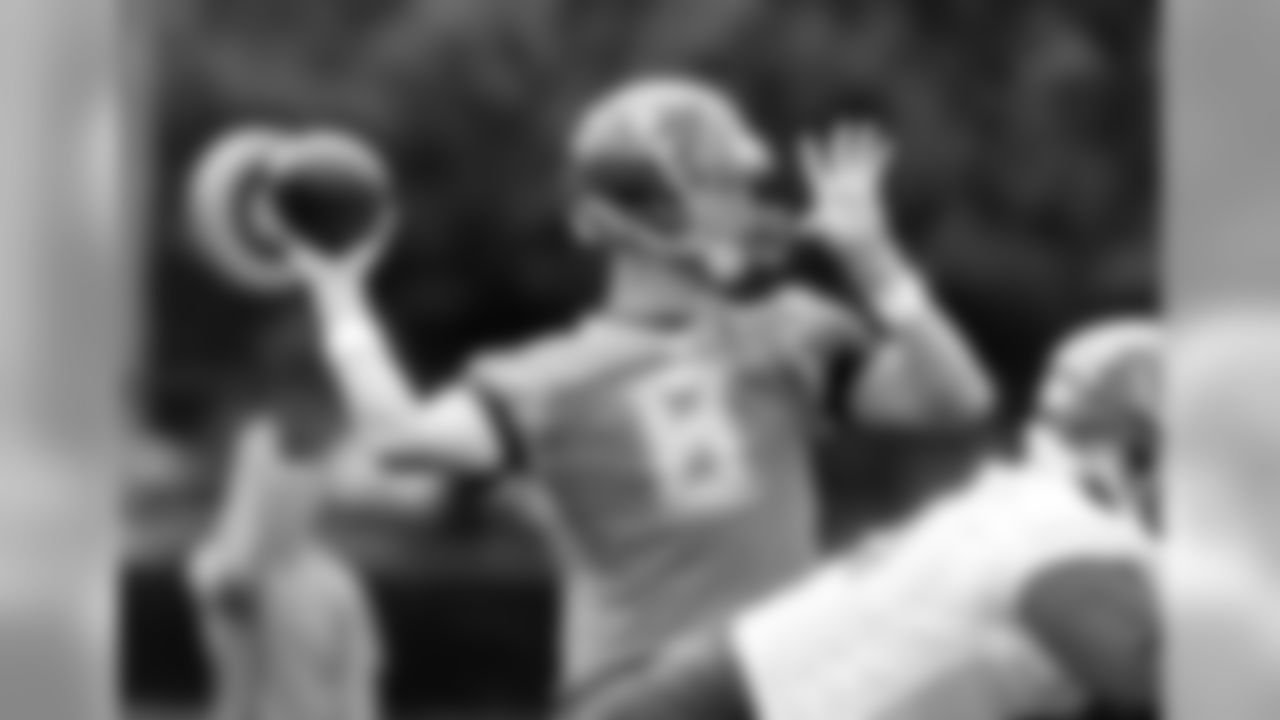
QB Mike Glennon

DE Robert Ayers

DT Gerald McCoy

CB Vernon Hargreaves

RB Charles Sims

QB Jameis Winston

RB Mike James

RB Peyton Barber

DE Channing Ward

DE Robert Ayers

TE Austin Seferian-Jenkins
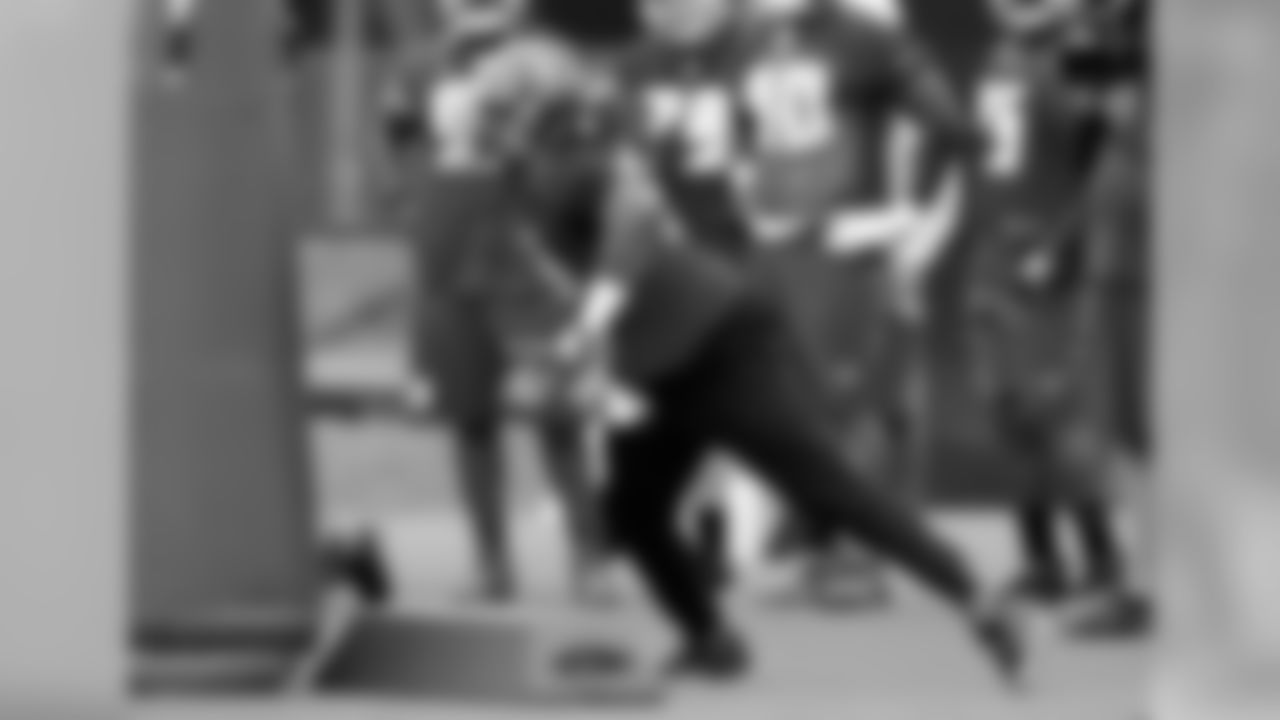
DT Gerald McCoy

DT Travis Britz

DT Gerald McCoy

DE Howard Jones

QB Jameis Winston

WR Adam Humphries

TE Austin Seferian-Jenkins

RB Doug Martin

TE Danny Vitale

OT Donovan Smith and OT Leonard Wester

OL Kevin Pamphile

WR Vincent Jackson

HC Dirk Koetter

QB Mike Glennon

HC Dirk Koetter

WR Kenny Bell

WR Donteea Dye

WR Mike Evans

WR Louis Murphy

Special Teams Coach Nate Kaczor

G Ali Marpet

WR Mike Evans

WR Adam Humphries and CB Alterraun Verner

QB Jameis Winston

WR Vincent Jackson

WR Kenny Bell

GM Jason Licht

G Ali Marpet

P Jacob Schum

P Bryan Anger

LBs Kwon Alexander, Lavonte David and Daryl Smith

K Roberto Aguayo

QB Jameis Winston

WR Mike Evans

QB Jameis Winston

RB Doug Martin
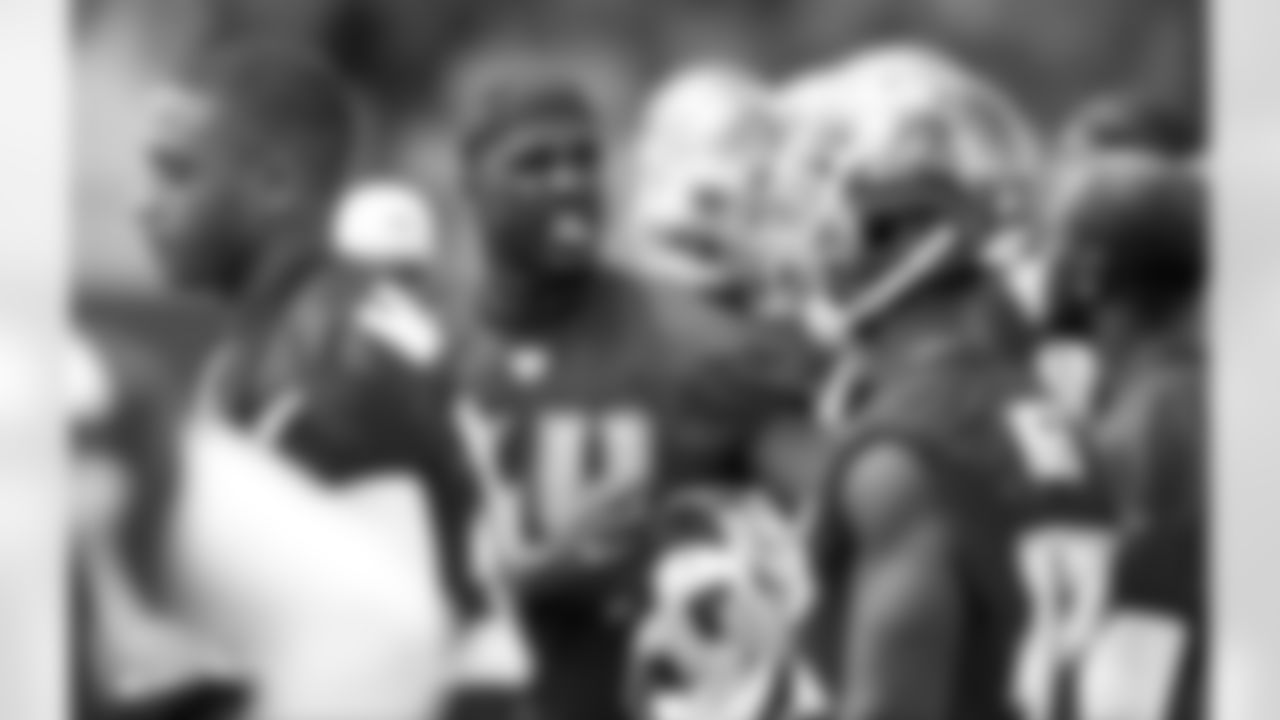
LB Lavonte David

S Bradley McDougald

CB Josh Robinson

QB Jameis Winston

RB Doug Martin

WR Andre Davis

OT Donovan Smith

DE Robert Ayers

DE Noah Spence

WR Kenny Bell




Each week during the remainder of the offseason, Senior Writer/Editor Scott Smith will dip into the inbox to answer questions from Buccaneer fans. This week, we look back at some players who had just a single big year for the Buccaneers, and we also pinpoint a year in which free agency helped put the team over the top.*
Fans can submit questions for upcoming mailbags via Twitter to @ScottSBucs (#BucsMailbag), through a message on the Buccaneers Official Facebook Page or via email at **tbbsocial@buccaneers.nfl.com*. The One Buc Mailbag runs every Thursday and is not necessarily meant to reflect the opinions of the team's management or coaching staff.
*1. Shining Briefly Mr. Scott Smith, I've got a question for you. #Mailbag and all that. I saw you refer to a guy named David Greenwood (never heard of him and I've been a Buc fan since the 90s) as a one-year wonder. I also was thinking about Tim Wright the other day because I saw he got hurt in Detroit and is going to miss the season. That's the guy that's famous because the Bucs traded him twice in two years, but he also had a pretty big season in his one year with the team, if I remember right. I guess he was a one year wonder too - for the Buccaneers at least. My question is, are there some other good examples that would fall into that category? Thanks for taking my question (if you do)! Mitchell from Sarasota (via email to**tbbsocial@buccaneers.nfl.com**)Good question, Mitchell, but strictly speaking, the hashtag isn't necessary when you send in your question through email rather than Twitter. (It's also not necessary to call me "Mr.," but whatever.)
That reference to David Greenwood of which you speak is from an article that just went up yesterday, so thanks for reading! It's a look at some of the Bucs' 2016 draftees and their chances at breaking certain rookie records. Greenwood, who was technically in NFL rookie in 1985 after playing three seasons in the USFL, played just one season as a Buccaneer but set the team's rookie record with five interceptions. Donnie Abraham later tied it in 1996. Maybe I shouldn't have called Greenwood a one-year wonder since he played the 1986 season in Green Bay and got into a couple games with Oakland in 1988, but I meant that in terms of his Buccaneer career.
I think that's what you mean about Tim Wright, too. He was indeed an enormous surprise in 2013 when, as an undrafted rookie, he converted from wide receiver to tight end and ended up not only making the team but catching 54 passes and scoring five touchdowns. The Bucs later traded him to the Patriots as part of the Logan Mankins deal, got him back as a waiver claim a year ago and then traded him again to the Lions for kicker Kyle Brindza. So far, Wright has played one season each for New England and Detroit and caught another 35 passes. As you mentioned, Mitchell, Wright did indeed suffer a torn ACL in May and will miss the 2016 season, a tough break for a nice guy.
So, who else might fall into this category over the first four decades of Buccaneer football? Let's say we're talking about players who had one standout season, or at least a pretty good one, but failed to repeat it, at least in Tampa. This could be a guy who only played one season in a Tampa Bay uniform, or it could be a player who was around for a few years but only had one real career peak. Like I said, good question. I've come up with a list of eight names for you; in order not to stretch the premise too thin, I've only included one player for each of eight categories: rushing, receiving, passing, kicker scoring, non-kicker scoring, sacks, interceptions and tackles.
**
- Rushing:** RB Thomas Jones, 2003. The Buccaneers traded failed 2002 draft pick Marquise Walker to the Cardinals in June of '03 to get Jones, the seventh-overall pick in the 2000 draft. Jones had produced three underwhelming seasons in Arizona, never topping 511 yards or five touchdowns, and looked to be a major draft bust. He was able to resurrect his career in Tampa, however, though he didn't do much through the first half of the year. In the second half, he took off with an increased workload and racked up 627 yards and three touchdowns on 137 carries, averaging 4.6 yards per tote. The Chicago Bears took note, signed him to a big new deal in 2004 and Jones would eventually surpass 10,000 career rushing yards, playing for five teams. He was certainly not a bust in the end, and he wasn't a one-year wonder in NFL terms, but his time in Tampa was brief if quite bright.
- Receiving: WR Antonio Bryant, 2008. There are other pass-catchers in team history who had peaks they never came close to replicating, including Michael Clayton, Jackie Harris and Ike Hilliard. However, Bryant peaked the highest by far and fell off far more quickly. Originally a second-round pick of the Cowboys who had a 1,000-yard season for Cleveland in 2005, Bryant was out of the game in 2007 before Jon Gruden came calling. Bryant made the most of his new opportunity, catching 83 passes for 1,248 yards and seven touchdowns and creating a personal highlight reel of amazingly acrobatic grabs. Both his catch and yardage totals rank as the fifth-highest single-season marks in franchise history. Bryant was so good that the Bucs used their franchise tag to keep him around in 2009, only to see a knee injury limit him to 39 catches in 13 games. Bryant got a new four-year deal from the Bengals the next spring but didn't make the team and never appeared in another NFL game.
- Passing: QB Brian Griese, 2004. This one might be a bit of a stretch, and Chris Simms's 2005 campaign would be a possible replacement. We should note up front that Griese threw for nearly 20,000 yards in his NFL career and had a pair of 3,000-yard campaigns for the Denver Broncos. Still, this 2004 season was a Buccaneer-specific peak that he never duplicated. Super Bowl winner Brad Johnson was the Bucs' starter to begin that campaign, but he gave away to Simms in Week Five. Simms got hurt in his first start, at New Orleans, and Griese stepped in to start 10 of the final 11 contests. During that time he threw for 2,632 yards, 20 touchdowns and 12 interceptions. His 7.83 yards per pass attempt and 6.0% touchdown rate are both single-season Buc records, which goes a long way towards explaining his 97.5 passer rating. That, too, remains a Buccaneer record to this day. Griese played another season in Tampa in 2005, then came back via a trade with Chicago in 2008, but in neither season did he top six starts or get even halfway to his 2004 totals for yards and touchdowns. His passer ratings of 79.6 and 69.4 in the '05 and '08 campaigns, respectively, didn't come close to his impressive 2004 finish.
**
- Kicker Scoring:* K Obed Ariri, 1984. Unsurprisingly, there are a number to choose from here. Like just about every team, the Bucs have had their share of long-running kickers, but in between the Husteds and Gramaticas and Bryants you are bound to have a season or two with a hired-gun kicker. Rian Lindell in 2013 and Patrick Murray in 2014 are recent examples, but Lindell had a long and successful career, mostly in Buffalo, and Murray still has a chance to establish the same thing. They *do fit the criteria of this exercise, but Ariri is a better over example because he played in only two NFL contests (1987 strike games for Washington) after that 1984 campaign as the Bucs' kicker. Ariri was an undrafted free agent who had a little bit of USFL experience, but was still a surprise winner of the Bucs' job. He went on to make 19 of 26 field goals and 38 of 40 extra points for a total of 95 points scored.
- Non-Kicker Scoring: WR Dezmon Briscoe, 2011. Briscoe caught 43 passes and scored seven touchdowns in his NFL career, which spanned four seasons in Tampa and Washington. Almost all of it came for the Bucs in 2011, when he played in every game and caught 35 passes for 387 yards and six scores. Briscoe actually led the Buccaneers in touchdowns that season. Of the 28 non-quarterbacks who have led the Bucs or tied for the team lead in touchdowns scored in a season, Briscoe's career total of seven scores is the lowest.
- Sacks: DE Dexter Manley, 1991. Manley nearly cracked 100 sacks during his career, most of which was spent in Washington. His 11th and final NFL season came in Tampa, when he recorded 6.5 sacks to finish second on the team to Broderick Thomas. He did that in just 14 games and seven starts because his season ended prematurely with his second drug-related suspension. Those 6.5 sacks are the most in one season by any Buccaneer who never had another sack for the team.
- Interceptions: CB Wayne Haddix, 1990. Haddix is absolutely the poster child for this team, Mitchell. I think he's exactly what you had in mind when you asked the question. Haddix had such an enormous season, statistically, in 1990 that he made the Pro Bowl; otherwise, he made very little impact in the NFL over a five-year span. During his magical '90 campaign, Haddix not only intercepted seven passes but returned them for 231 yards and three touchdowns, both single-season Buccaneer records (the latter one later tied by Derrick Brooks in 2002). Outside of campaign, Haddix never had another NFL interception in a total of 25 games played. Originally an undrafted free agent with the Giants in 1987, he spent two years playing on special teams in New York and then was out of the league in 1989 before the Bucs signed him in March of 1990. His big season earned Haddix a second year with the Buccaneers but he was released four games into the 1991 season, his last in the NFL.
- Tackles: LB Jessie Solomon, 1991. This is another player who had a productive NFL career but only spent one season in Tampa. Solomon had been a starter for most of his first three seasons in Minnesota despite arriving as a 12th-round draft pick in 1986. In 1989, he went to Dallas along with four other players and eight draft picks in the most famous NFL trade of all time, with Herschel Walker going in the other direction. Unhappy as a reserve in Dallas, Solomon was traded to New England and then to Tampa Bay in '91. That year, he racked up 128 tackles, nearly a career high despite missing three games. The Bucs elected not to re-sign Solomon after that year and he went to Atlanta, where he had two more productive seasons.
2. When Free Agency Works Scott – I'm excited about Robert Ayers and Brent Grimes (especially Ayers) but I'm trying not to get TOO excited if you know what I mean. I don't really have a lot of proof, except for a couple recent years I remember well, but I don't feel like free agency works out very often, even when it looks really good in the offseason. Can you name a season in which free agency has really made a difference for a good team…I'm just talking about the Buccaneers. Thanks, Ed (Tampa) (via email to**tbbsocial@buccaneers.nfl.com**)I sure can: 2002.
I understand where you're coming from, Ed. It's not hard to think of some years in which free agency has looked good in March and really not paid off in September. I'm going to write about 2002 in a second, but just two years after that, in 2004, the Bucs dived deep into free agency and didn't come back up with any real treasure other than a very good punter (Josh Bidwell). Otherwise, it was the likes of Charlie Garner, Mario Edwards, Matt Stinchcomb, Matt O'Dwyer, Tommy Knight, Darrell Russell and so on. That doesn't even count a couple others, such as Derrick Deese and Tim Brown who weren't technically unrestricted free agents.
And that's not unique to the Buccaneers, of course. You can find cautionary tales of free agency in every NFL outpost. Just last year, you had DeMarco Murray and Byron Maxwell in Philadelphia, Andre Johnson and Frank Gore in Indianapolis and Brandon Browner and C.J. Spiller in New Orleans.
On an individual-player basis, unrestricted free agency has worked out plenty of times for the Buccaneers since it became part of the NFL landscape in 1993. Tampa Bay came right out of the gates with one of their best ever, signing linebacker Hardy Nickerson away from Pittsburgh in '93. Cornerback Martin Mayhew worked out that same year, too. I wrote a story last year about the top 20 UFA signings in team history, and while it was admittedly a bit tough to go 20 deep, you can probably guess the top three or four: Nickerson, Simeon Rice, Brad Johnson, Vincent Jackson.
But what Ed is asking about are specific instances of a season turning out better for the Buccaneers because of their collective work in free agency. Nickerson was an immediate hit in Tampa but the Bucs weren't really much better in 1994 than they were in 1993. Jackson has been incredibly productive through his first four seasons in Tampa but hasn't got to experience the playoffs in that span.
Johnson and Rice, on the other hand, joined the Buccaneers together in 2001 and were Super Bowl champs by the end of 2002. That was about all Tampa Bay did during that '01 free agency period, but if you want quality over quantity, this was probably the best the team has ever done. However, it doesn't totally fit Ed's criteria because the 2000 team had gone 10-6 before losing a Wild Card game in Philadelphia, while the 2001 team with Johnson and Rice went 9-7 before losing a Wild Card game in Philadelphia.
Pictures from Winston's spring workouts at One Buccaneer Place.
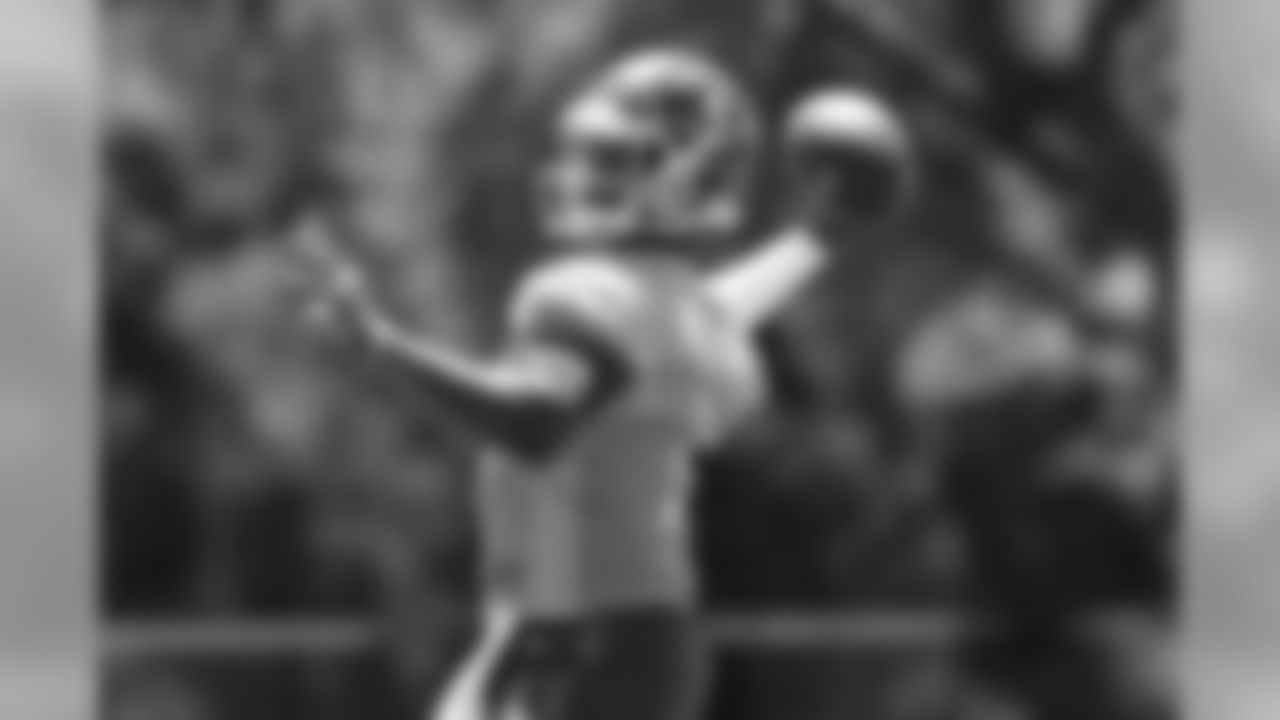














































The free agency class the following year would definitely make a difference, however. New Head Coach Jon Gruden inherited a 2002 team that already had a monstrously good defense but wasn't terribly productive on offense and was lacking high-end draft picks due to the deal to bring Gruden over from Oakland. Gruden couldn't really rebuild the offense through the draft, so he turned to free agency to get running back Michael Pittman, wide receivers Joe Jurevicius and Keenan McCardell, tight ends Ken Dilger and Rickey Dudley and offensive linemen Kerry Jenkins and Roman Oben. Not all of those players were technically unrestricted free agents, but I've included them all to give you an idea of how many offensive contributors were new to the team in 2002.
I think the 2005 team got better with the additions of Anthony Becht, Ike Hilliard and Chris Hovan, not to mention some newfound restraint after the '04 disaster. The 2007 team got noticeably better and made the playoffs after a rough 2006, and much of that was due to replacing Bruce Gradkowski at quarterback with free agent Jeff Garcia. Defensive end Kevin Carter helped a lot, too, and Cato June was solid at linebacker.
That said, 2002 is the clear answer to your question, Ed. Hopefully, this year's class has the same sort of impact, just on the other side of the ball. Gruden took over a team with a mostly set defense and focused on getting the offense in shape. Dirk Koetter has taken over a team that showed enormous promise on offense and has most of its pieces in place in that respect but needed an infusion of talent on defense. Maybe we'll be treated to a replay of 2002, just with the two sides reversed.
3. Camp on the Horizon
Including this question is kind of cheating, I guess, since I essentially answered the same thing last week. Actually, I guess laziness is the better word for it. Still, it's clear that there are a lot of people starting to wonder about the training camp schedule, so I felt it was worthwhile to go over it again.
The most important part of the answer is, yes, training camp will be open to the public; or at least most of it. Last year there were 11 practices that fans could attend in their entirety, all held at One Buccaneer Place, the team's headquarters. You can expect this year's number of open practices to be very similar.
You can also expect camp to start somewhere near the very end of June, as teams are not allowed to open training camp more than 15 days before their preseason opener. Tampa Bay's first preseason game this summer is on August 11.
You can also expect most if not all those open practices to be held in the morning, probably starting somewhere between 8:00 and 9:00 a.m. Koetter recently revealed that his team would primarily practice in the morning all the way through camp and the preseason schedule in order to beat the heat as much as possible.
And if you've been to a Buccaneers training camp practice at One Buc before, you can expect all of the same amenities you've experienced before, including free parking, autograph opportunities with the players, discounted concessions, merchandise for sale and appearances by the team's cheerleaders and mascot, Captain Fear. There will also be a big Kids Zone area where the younger fans can get interactive and show off their football skills.
All of this will be formally announced soon, perhaps as soon as next week, along with a specific day-by-day camp schedule. After you've checked out the schedule and pinpointed what dates you want to attend, it's a good idea to keep an eye on Buccaneers.com for any last-minute changes. As you know, that Tampa summer weather is difficult to predict!






















